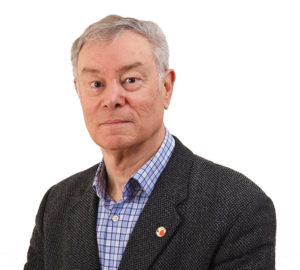
This past summer a part of Leaside that most of us never think about became the subject of international study. Visitors from around the world were here to check out our ‘cultural landscape’. GEOFF KETTEL explains:
Leaside was the focus of international attention by landscape architects recently.
The Cultural Landscape Foundation (TCLF), based in Washington, DC, examined Leaside as one of the “world class landscape architecture projects” in its What’s Out There walking tours, on May 24, following its first international conference, held in Toronto on May 22.
What are cultural landscapes? UNESCO (the United Nations agency focussed on educational, scientific and cultural matters) has defined three types of cultural landscapes: designed landscapes, which are intentionally designed; evolved landscapes; associative landscapes, with powerful religious, artistic, or cultural associations, such as sacred sites.
TCLF categorizes Leaside as a designed landscape.
What makes it distinctive as a cultural heritage landscape?
Leaside is believed to be (and according to Paul Dilse, a Toronto heritage planning consultant, probably is) the first new town in Ontario based on garden city principles.
First: It was designed in 1912 as a complete community with residential (west) and industrial (east) uses by American-born Frederick Todd, one of the founders of the Canadian Society of Landscape Architects, who was also responsible for other model towns in Canada: Mount Royal (Montreal, PQ), Shaughnessy Heights and Port Mann (Vancouver, BC), Bowling Green (Port Claire, PQ) and Point Grey, BC.
Second: Leaside presents gently curving and diagonal streets with a rhythmic consistency of uniform setbacks and Modern Classicism style architecture including Tudor and Georgian Revival, Art Moderne (e.g. the Agnes Macphail house at Milwood and Donegall).
The planned diversity of housing types includes single, semi, multi-family and bungalow house forms, and one/two/three-storey heights.
Unique (for Canada) is a concentration of “garden apartment” style multi-family walk-up apartment buildings, i.e. Garden Court Apartments (1477 Bayview); the Talbot Apartments (three blocks – Kelvin Grove, Strathavon, and Glen-Leven) (also on Bayview) and Crestview Apartments (Leacrest/Mallory).
TCLF focussed on the Garden Court Apartments on Bayview, the Modernist masterpiece, designed by Forsey Page & Steele, with landscaping by Howard Burlingham Dunington-Grubb .
Third: several “stranded” houses of early settlers (John Lea Jr., James Lea, Thomas Elgie) were placed in relation to their farms, and the lanes by which they were connected to Bayview and ultimately to Yonge St., but misplaced now after new developments.
The Toronto conference and the walking tours were a great opportunity to enrich the understanding of the concept and the value of cultural landscapes of a large number of people, including walking tour leaders (Connor Turnbull of Leaside Matters, Stewart McIntosh of the City of Toronto, Agnes Vermes of the LPOA , and me.
And we worked with Leaside Matters (led by Connor Turnbull and Kim Auchinachie) to develop a special commemorative booklet, called The Cultural Heritage Landscape of Leaside, copies of which will be available at the Rotary Corn Roast on Sept. 20.
The Cultural Landscape Foundation What’s Out There? Toronto can be accessed at
http://tclf.org/sites/default/files/microsites/wot-guide-toronto/ index.html
https://tclf.org/sites/default/files/features/WOTW-booklets_Toronto_ download.pdf


